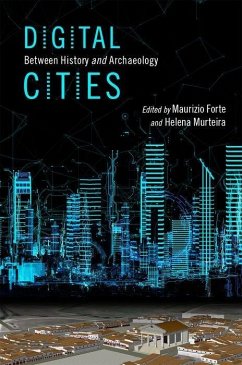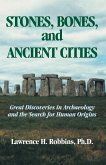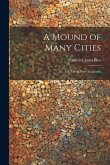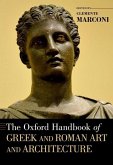Digital Cities
Between History and Archaeology
Herausgeber: Forte, Maurizio; Murteira, Helena
Schade – dieser Artikel ist leider ausverkauft. Sobald wir wissen, ob und wann der Artikel wieder verfügbar ist, informieren wir Sie an dieser Stelle.
Digital Cities
Between History and Archaeology
Herausgeber: Forte, Maurizio; Murteira, Helena
- Broschiertes Buch
- Merkliste
- Auf die Merkliste
- Bewerten Bewerten
- Teilen
- Produkt teilen
- Produkterinnerung
- Produkterinnerung
This volume explores the new paradigm of the Digital City as being simultaneously a past and a contemporary entity.
Andere Kunden interessierten sich auch für
This volume explores the new paradigm of the Digital City as being simultaneously a past and a contemporary entity.
Produktdetails
- Produktdetails
- Verlag: Oxford University Press
- Seitenzahl: 368
- Erscheinungstermin: 20. Februar 2020
- Englisch
- Abmessung: 234mm x 155mm x 20mm
- Gewicht: 567g
- ISBN-13: 9780197501122
- ISBN-10: 0197501125
- Artikelnr.: 58567545
- Herstellerkennzeichnung
- Libri GmbH
- Europaallee 1
- 36244 Bad Hersfeld
- gpsr@libri.de
- Verlag: Oxford University Press
- Seitenzahl: 368
- Erscheinungstermin: 20. Februar 2020
- Englisch
- Abmessung: 234mm x 155mm x 20mm
- Gewicht: 567g
- ISBN-13: 9780197501122
- ISBN-10: 0197501125
- Artikelnr.: 58567545
- Herstellerkennzeichnung
- Libri GmbH
- Europaallee 1
- 36244 Bad Hersfeld
- gpsr@libri.de
Maurizio Forte is William and Sue Gross Professor of Classical Studies Art, Art History, and Visual Studies at Duke University. He is the founder and director of the DIG@Lab at Duke as well as the author or editor of three books, including Virtual Archaeology. Helena Murteira is an art historian with a PhD from the University of Edinburgh. She is a member of the Scientific Committee of the Centre for Art History and Artistic Research (CHAIA) at the University of Évora.
* Introduction Maurizio Forte and Helena Murteira
* Part 1 - Methodological challenges
* 1. Vulci 3000: a Digital Challenge for the Interpretation of Etruscan
and Roman Cities Maurizio Forte, Nevio Danelon, David Johnston,
Katherine McCusker, Everett Newton, Gianfranco Morelli and Gianluca
Catanzariti
* 2. "I dreamt I dwelt in marble halls": Using Computer Based
Visualisation of Roman Domestic Architecture to Evoke the Built and
the "Felt" Environment Richard Beacham
* 3. The Digital Revolution and Modeling Time and Change in Historic
Buildings and Cities: The Case of Visualizing Venice Caroline
Bruzelius
* 4. Exploring visually the known and the ill-known about Kraków's
centre urban evolution: an information visualisation perspective
Jean-Yves Blaise and Iwona Dudek
* 5. Experiencing past, present and future urban environments through
digital representation, storytelling and simulation Eva Pietroni
* 6. Simplified Crowd Simulation in Virtual Heritage Sites Luís
Sequeira
* Part 2 - Conservation, requalification and communication
* 1. At-Risk World Heritage and Virtual Reality Visualization for
Cyber-Archaeology - The Mar Saba Test Case Thomas E. Levy, Connor
Smith, Kristin Agcaoili, Anish Kannan, Avner Goren, Jürgen P.
Schulze, and Glenn Yago
* 2. Oporto's Historic Centre (WH) - from historical research to (real)
Virtual Heritage Visualization Maria Leonor Botelho
* 3. Omnidirectional Strategies for Exploring Ancient Cities and
Territories Sarah Kenderdine
* Part 3 - Hermeneutics and epistemological boundaries
* 1. Çatalhöyük as an Open Site? On the Openness of Virtual
Reconstructions of Archaeological Sites to a Multiplicity of
Interpretations Zeynep Aktüre
* 2. Virtual Cities as Memoryscapes: The Case of Lisbon Maria Alexandra
Gago da Câmara, Helena Murteira and Paulo Simões Rodrigues
* Part 4- Research, planning and learning
* 1. Spatial Representation of Vienna's Street-Level Environment-Urban
Parterre Mapping (UPM) Angelika Psenner
* 2. Unreal Projects: Using Immersive Visualization to Learn about
Distant and Historical Locales Gabriela Campagnol, Stephen Caffey,
Mark J. Clayton, Kevin Glowacki, Nancy Klein, Julian Kang and
Geoffrey Booth
* 3. At the Interface - Multimodal Sensing and Intelligent Learning
Systems -The Dynamic Transformation of the Cityscape, and Its Ongoing
Study Bill Seaman
* Part 1 - Methodological challenges
* 1. Vulci 3000: a Digital Challenge for the Interpretation of Etruscan
and Roman Cities Maurizio Forte, Nevio Danelon, David Johnston,
Katherine McCusker, Everett Newton, Gianfranco Morelli and Gianluca
Catanzariti
* 2. "I dreamt I dwelt in marble halls": Using Computer Based
Visualisation of Roman Domestic Architecture to Evoke the Built and
the "Felt" Environment Richard Beacham
* 3. The Digital Revolution and Modeling Time and Change in Historic
Buildings and Cities: The Case of Visualizing Venice Caroline
Bruzelius
* 4. Exploring visually the known and the ill-known about Kraków's
centre urban evolution: an information visualisation perspective
Jean-Yves Blaise and Iwona Dudek
* 5. Experiencing past, present and future urban environments through
digital representation, storytelling and simulation Eva Pietroni
* 6. Simplified Crowd Simulation in Virtual Heritage Sites Luís
Sequeira
* Part 2 - Conservation, requalification and communication
* 1. At-Risk World Heritage and Virtual Reality Visualization for
Cyber-Archaeology - The Mar Saba Test Case Thomas E. Levy, Connor
Smith, Kristin Agcaoili, Anish Kannan, Avner Goren, Jürgen P.
Schulze, and Glenn Yago
* 2. Oporto's Historic Centre (WH) - from historical research to (real)
Virtual Heritage Visualization Maria Leonor Botelho
* 3. Omnidirectional Strategies for Exploring Ancient Cities and
Territories Sarah Kenderdine
* Part 3 - Hermeneutics and epistemological boundaries
* 1. Çatalhöyük as an Open Site? On the Openness of Virtual
Reconstructions of Archaeological Sites to a Multiplicity of
Interpretations Zeynep Aktüre
* 2. Virtual Cities as Memoryscapes: The Case of Lisbon Maria Alexandra
Gago da Câmara, Helena Murteira and Paulo Simões Rodrigues
* Part 4- Research, planning and learning
* 1. Spatial Representation of Vienna's Street-Level Environment-Urban
Parterre Mapping (UPM) Angelika Psenner
* 2. Unreal Projects: Using Immersive Visualization to Learn about
Distant and Historical Locales Gabriela Campagnol, Stephen Caffey,
Mark J. Clayton, Kevin Glowacki, Nancy Klein, Julian Kang and
Geoffrey Booth
* 3. At the Interface - Multimodal Sensing and Intelligent Learning
Systems -The Dynamic Transformation of the Cityscape, and Its Ongoing
Study Bill Seaman
* Introduction Maurizio Forte and Helena Murteira
* Part 1 - Methodological challenges
* 1. Vulci 3000: a Digital Challenge for the Interpretation of Etruscan
and Roman Cities Maurizio Forte, Nevio Danelon, David Johnston,
Katherine McCusker, Everett Newton, Gianfranco Morelli and Gianluca
Catanzariti
* 2. "I dreamt I dwelt in marble halls": Using Computer Based
Visualisation of Roman Domestic Architecture to Evoke the Built and
the "Felt" Environment Richard Beacham
* 3. The Digital Revolution and Modeling Time and Change in Historic
Buildings and Cities: The Case of Visualizing Venice Caroline
Bruzelius
* 4. Exploring visually the known and the ill-known about Kraków's
centre urban evolution: an information visualisation perspective
Jean-Yves Blaise and Iwona Dudek
* 5. Experiencing past, present and future urban environments through
digital representation, storytelling and simulation Eva Pietroni
* 6. Simplified Crowd Simulation in Virtual Heritage Sites Luís
Sequeira
* Part 2 - Conservation, requalification and communication
* 1. At-Risk World Heritage and Virtual Reality Visualization for
Cyber-Archaeology - The Mar Saba Test Case Thomas E. Levy, Connor
Smith, Kristin Agcaoili, Anish Kannan, Avner Goren, Jürgen P.
Schulze, and Glenn Yago
* 2. Oporto's Historic Centre (WH) - from historical research to (real)
Virtual Heritage Visualization Maria Leonor Botelho
* 3. Omnidirectional Strategies for Exploring Ancient Cities and
Territories Sarah Kenderdine
* Part 3 - Hermeneutics and epistemological boundaries
* 1. Çatalhöyük as an Open Site? On the Openness of Virtual
Reconstructions of Archaeological Sites to a Multiplicity of
Interpretations Zeynep Aktüre
* 2. Virtual Cities as Memoryscapes: The Case of Lisbon Maria Alexandra
Gago da Câmara, Helena Murteira and Paulo Simões Rodrigues
* Part 4- Research, planning and learning
* 1. Spatial Representation of Vienna's Street-Level Environment-Urban
Parterre Mapping (UPM) Angelika Psenner
* 2. Unreal Projects: Using Immersive Visualization to Learn about
Distant and Historical Locales Gabriela Campagnol, Stephen Caffey,
Mark J. Clayton, Kevin Glowacki, Nancy Klein, Julian Kang and
Geoffrey Booth
* 3. At the Interface - Multimodal Sensing and Intelligent Learning
Systems -The Dynamic Transformation of the Cityscape, and Its Ongoing
Study Bill Seaman
* Part 1 - Methodological challenges
* 1. Vulci 3000: a Digital Challenge for the Interpretation of Etruscan
and Roman Cities Maurizio Forte, Nevio Danelon, David Johnston,
Katherine McCusker, Everett Newton, Gianfranco Morelli and Gianluca
Catanzariti
* 2. "I dreamt I dwelt in marble halls": Using Computer Based
Visualisation of Roman Domestic Architecture to Evoke the Built and
the "Felt" Environment Richard Beacham
* 3. The Digital Revolution and Modeling Time and Change in Historic
Buildings and Cities: The Case of Visualizing Venice Caroline
Bruzelius
* 4. Exploring visually the known and the ill-known about Kraków's
centre urban evolution: an information visualisation perspective
Jean-Yves Blaise and Iwona Dudek
* 5. Experiencing past, present and future urban environments through
digital representation, storytelling and simulation Eva Pietroni
* 6. Simplified Crowd Simulation in Virtual Heritage Sites Luís
Sequeira
* Part 2 - Conservation, requalification and communication
* 1. At-Risk World Heritage and Virtual Reality Visualization for
Cyber-Archaeology - The Mar Saba Test Case Thomas E. Levy, Connor
Smith, Kristin Agcaoili, Anish Kannan, Avner Goren, Jürgen P.
Schulze, and Glenn Yago
* 2. Oporto's Historic Centre (WH) - from historical research to (real)
Virtual Heritage Visualization Maria Leonor Botelho
* 3. Omnidirectional Strategies for Exploring Ancient Cities and
Territories Sarah Kenderdine
* Part 3 - Hermeneutics and epistemological boundaries
* 1. Çatalhöyük as an Open Site? On the Openness of Virtual
Reconstructions of Archaeological Sites to a Multiplicity of
Interpretations Zeynep Aktüre
* 2. Virtual Cities as Memoryscapes: The Case of Lisbon Maria Alexandra
Gago da Câmara, Helena Murteira and Paulo Simões Rodrigues
* Part 4- Research, planning and learning
* 1. Spatial Representation of Vienna's Street-Level Environment-Urban
Parterre Mapping (UPM) Angelika Psenner
* 2. Unreal Projects: Using Immersive Visualization to Learn about
Distant and Historical Locales Gabriela Campagnol, Stephen Caffey,
Mark J. Clayton, Kevin Glowacki, Nancy Klein, Julian Kang and
Geoffrey Booth
* 3. At the Interface - Multimodal Sensing and Intelligent Learning
Systems -The Dynamic Transformation of the Cityscape, and Its Ongoing
Study Bill Seaman




